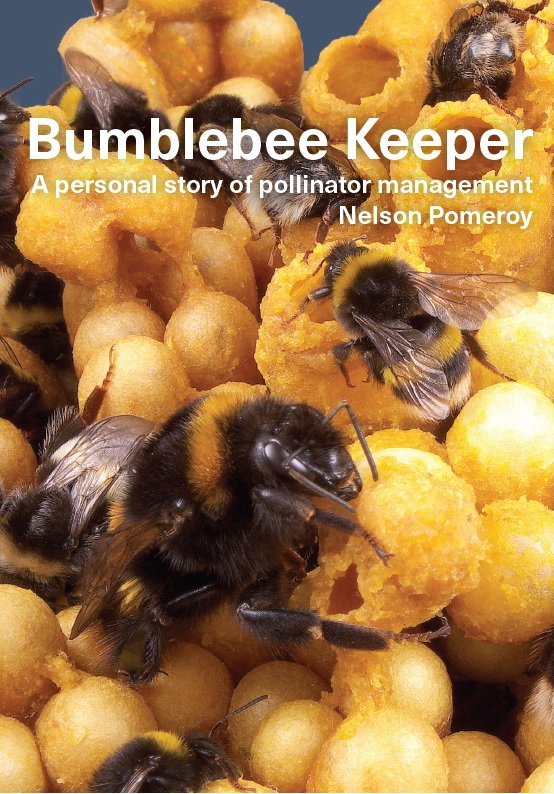
Cover image: Inside an observation hive of the buff-tailed bumblebee Bombus terrestris.
Within New Zealand $42.00 BUY NOW
Outside New Zealand purchase from the publisher NORTHERN BEE BOOKS UK £19.95
or Amazon. com (USA) US$28 or Amazon.au (Australia) AU$40
175 pages, paperback
245 x 170 mm
ISBN 978-1914934568
Colour photographs and drawings by the author
Published by Northern Bee Books, UK
Printed in UK, USA and Australia
CONTACT email:
[email protected]
SCROLL DOWN FOR MORE – CHAPTERS – THE AUTHOR – IMAGES FROM THE BOOK – ABOUT BUMBLEBEES – POLLINATION
CHAPTER TITLES
1. Bumblebees in the field
2. Bumblebees in the laboratory
3. Bumblebees in the crop and orchard: the pollination numbers game
4. Towards bumblebee domestication
5. Bumblebees in greenhouses: Genesis of a new industry
6. Industry development and personal challenges
7. After Zonda bees: Travel, school and kiwifruit again
8. The environment and bumblebees, rejected or cherished
THE AUTHOR
Nelson grew up on a sheep and cattle farm managed by his father on the edge of the “hill country” in South Taranaki, New Zealand and attended the tiny Omahina school on the edge of the farm. Always interested in wildlife he wrote “Nelson’s Nature Notes” for the school newsletter. He kept a nest of bumblebees in the house as a teenager and later kept queen bumblebees, trying to start nests with them, in his hostel room at Massey University. After an MSc thesis there that studied bumblebee nests from the home farm, he took up an invitation for PhD studies at the University of Toronto where he researched the role of the bumblebee queen in controlling her workers.
For reasons concerning his children’s education, discussed in the book, he quit academia and set up “Zonda Bees” a commercial bumblebee supplier for pollination. After a decade in business he became a school science teacher, and later returned to bumblebee research again. His career made several abrupt changes of direction and some research results were overtaken by other imperatives rather than being published, so some of them are presented in the book.
Nelson hopes that his approach to practical inventions may stimulate others to consider unconventional methods both for conserving endangered bumblebees and managing insects for pollination.
IMAGES FROM THE BOOK
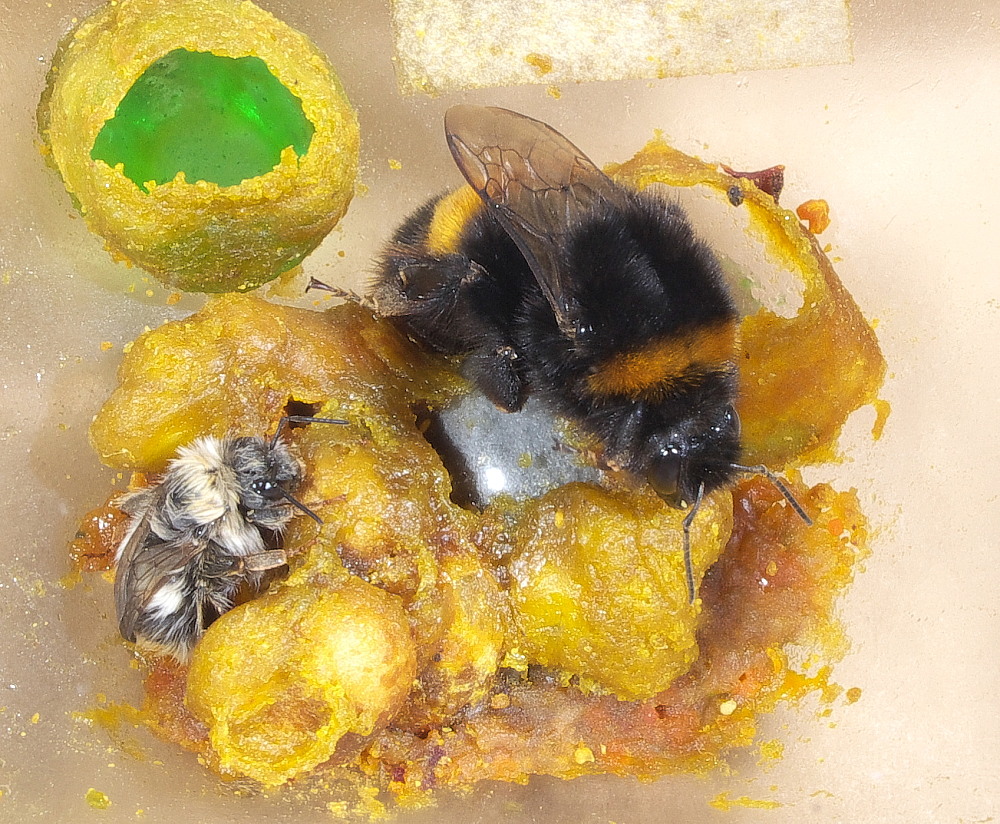
Bumblebee queen with her first, newly-emerged, worker in a “starter cup.” Her honey-pot contains sugar-water tinted with green food colouring.
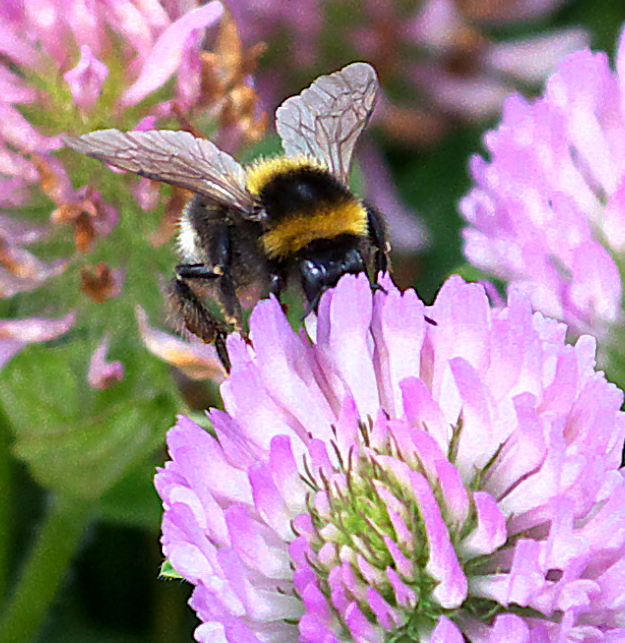
Long-tongued bumblebee Bombus ruderatus on a red clover flower. Nearly 200 colonies of this species were obtained for a pollination trial.
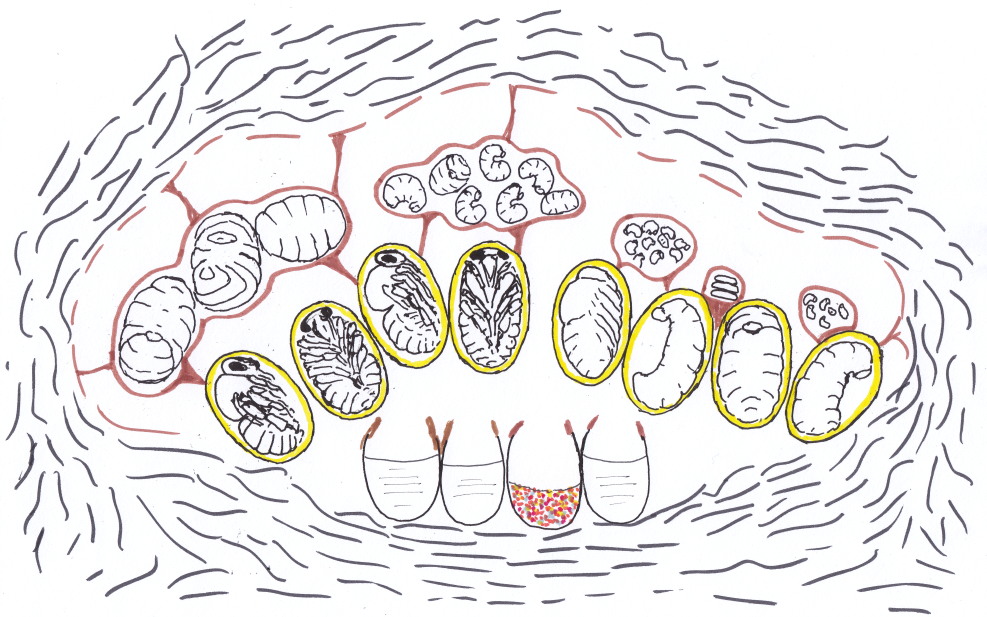
Section through a bumblebee nest. Bottom layer: empty cocoons containing honey and pollen; middle layer: cocoons with developing pupae; top layer: eggs and larvae. Yellow = silk, brown = wax. The whole is surrounded by insulating nest material.
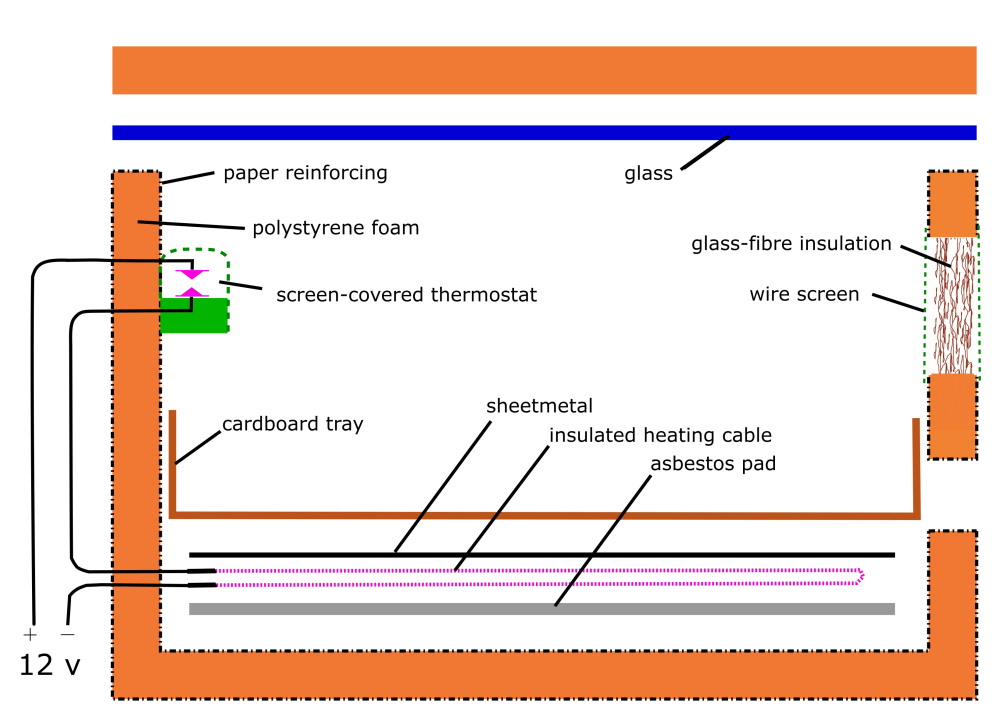
Expanded section of an early-design observation hive using electric-blanket cable for warming.
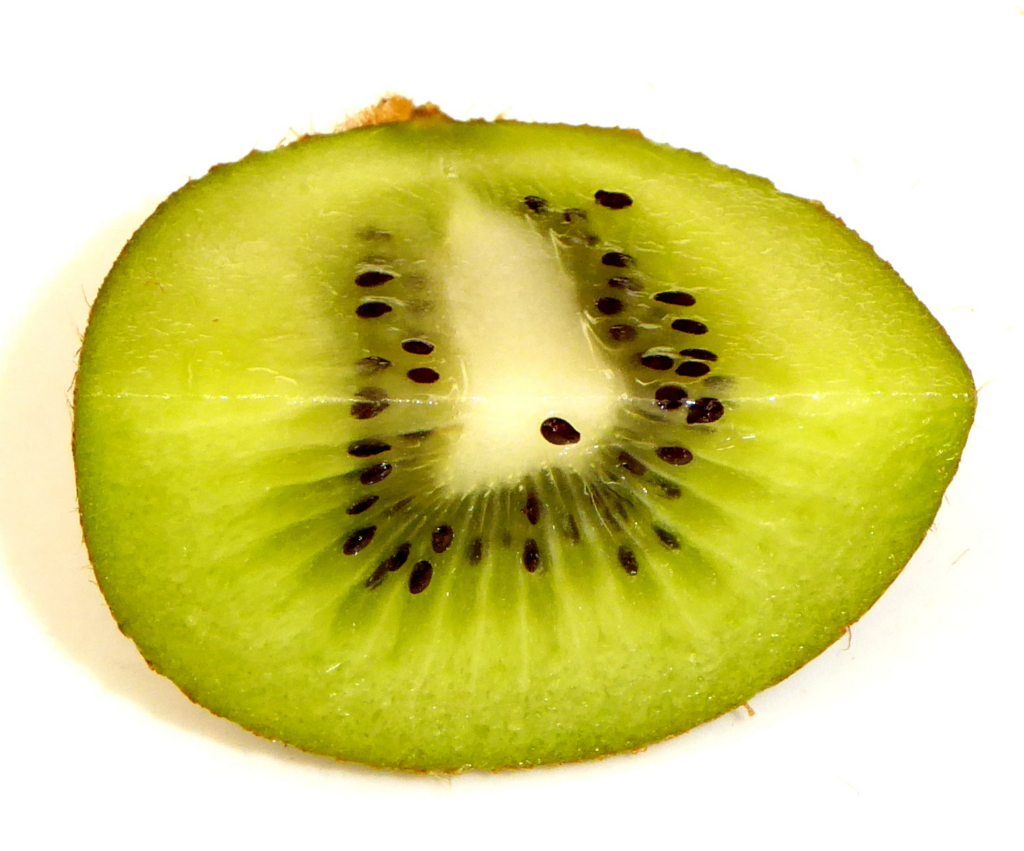
Section through a “gold” G3 kiwifruit. Fruit size is related to the number of seeds, which in turn is related to pollination. The book describes the author’s trials to estimate the number of hives of bumblebees needed to pollinate kiwifruit.
ABOUT BUMBLEBEES
There are a few hundred species of bumblebees and are a feature of Northern cool-temperate climates. The familiar big ones are usually fertile overwintered queens which try to find a nesting site with fibrous insulation, usually the abandoned nest of a mouse or other small mammal or even a bird. Queens gather nectar and pollen, lay a batch of eggs and raise a group of about ten small workers which take over the foraging effort. Baby bees are larvae (grubs), and are fed by the adults until they spin silken cocoons, and subsequently chew their way out as adults (see diagram above). Little bumblebees are not babies – no insect grows after it has wings -they are workers or males.
Bumblebee colonies grow to a maximum of a few hundred adults, in weeks or a few months, and then “go to seed” – they produce males and up to hundreds of new queens which fly away, mate and hibernate. The “going to seed” of a bumblebee colony seems to be triggered by the aging of the queen and the social dynamics in the nest – it often occurs during or before mid summer and thus is not triggered by the onset of winter.
Commercial rearing of bumblebees involves establishing colonies from individual queens, allowing the colonies to grow either in controlled environment rooms or outdoors, and then shipping them to the crops to be pollinated where they complete their life cycle.
POLLINATION
Most plants reproduce sexually – male spores (pollen) are transferred from male to female parts and result in seeds. This transfer occurs by wind in most cereals and many trees, but plants with visually obvious flowers usually need an animal to visit them to bring the pollen. Rewarded by nectar (or sometimes just pollen) the visitors may be birds, bats, mammals or insects. But bees are the super pollinators because pollen is the primary food for their whole life cycle (unlike butterflies or birds) and they work hard visiting many flowers in succession.
Many fruits nuts and vegetables – apples, almonds, pumpkins to name a few – are primarily pollinated by bees. Because honeybees are an established industry and hives contain many thousands of bees, they are the most widely used pollinators for commercial crops. But some crops, especially those in greenhouses, or not attractive to honeybees, are well pollinated by bumblebees. Hence the new industry which started in the late 1980s. “Bumblebee Keeper” describes the author’s role in the development of this industry.
CONTACT email: [email protected]